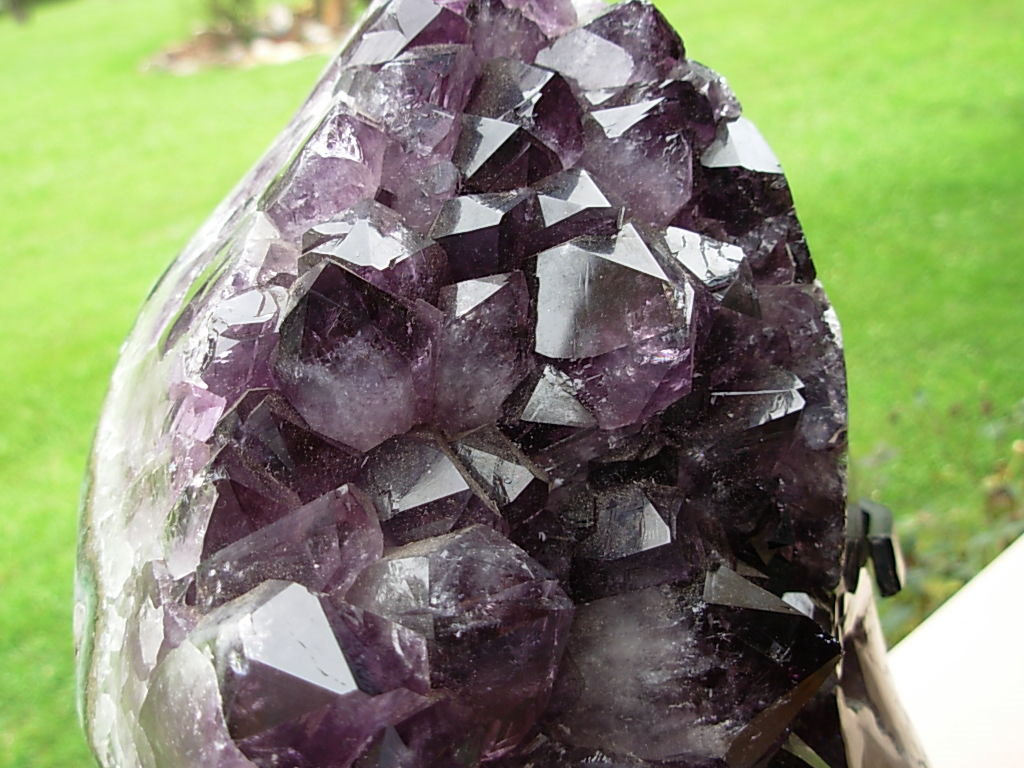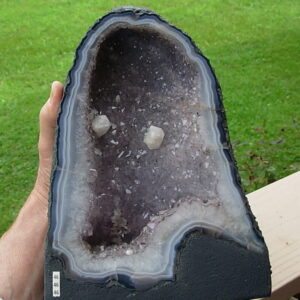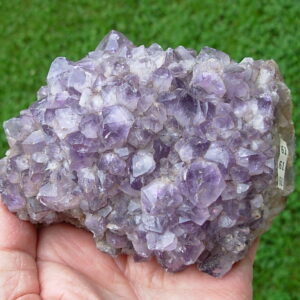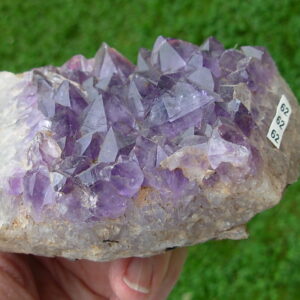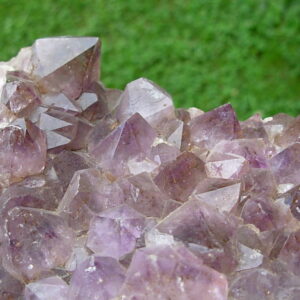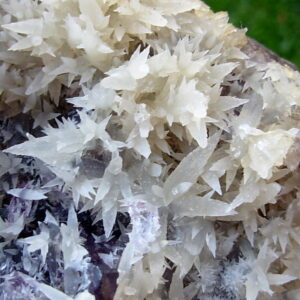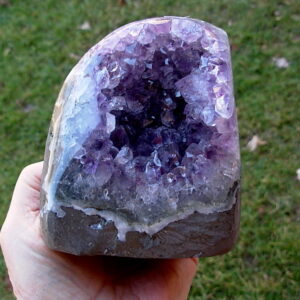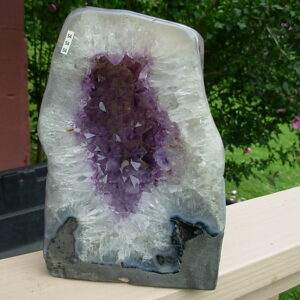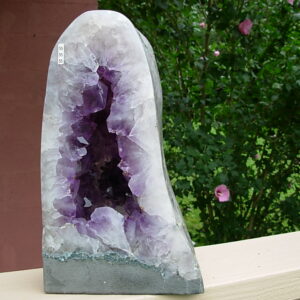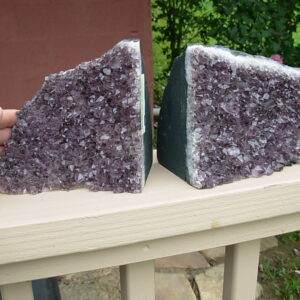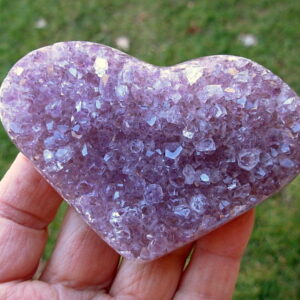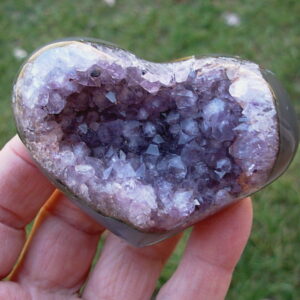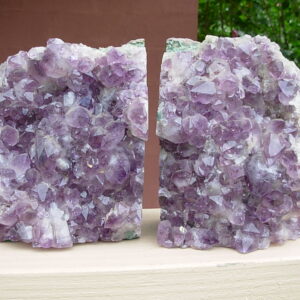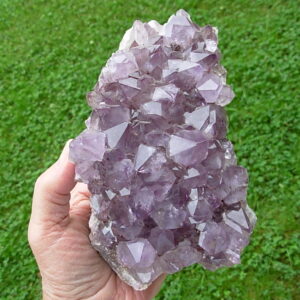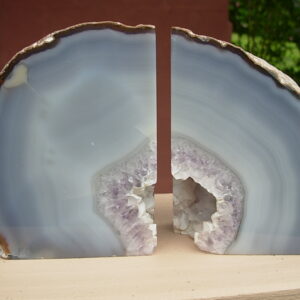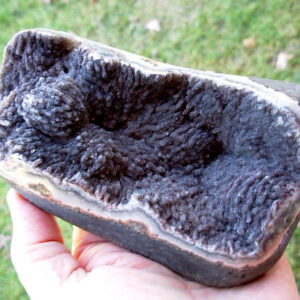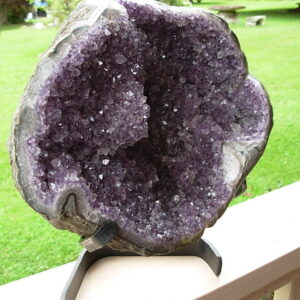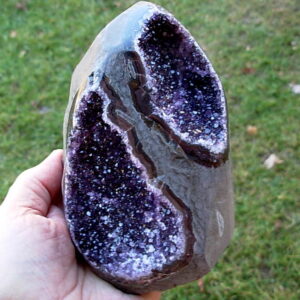Amethyst from Brazil
Amethyst is mother nature’s classy version of a quartz crystal!
They are visually stunning and have been in demand for many centuries. Its name derives from the Greek "amethystos", which means "not drunken", as Amethyst in ages past was thought to ward off drunkenness. This gemstone is also said to protect its wearer against seduction. Moses described it as a symbol of the Spirit of God in the official robes of the High Priest of the Jews. If this stone were not so readily available it would be extremely expensive based upon demand.
The color of some Amethyst may slowly fade upon constant exposure to light. Amethyst changes color when it is heated. Amethyst is sometimes heat treated to deepen its color, or to transform it into Citrine. The color of certain varieties can change to a light green color, which is called "Prasiolite". Smoky colored stones can be transformed to a yellow to brownish-red and clear ones may become yellow. The natural geothermal heating sometimes creates multi-color stones, like the specimens found in Bolivia, a variety called Ametrine.
One of the best websites we have found to help "Identify the Location" your specimens came from is www.galleries.com/Amethyst They have an excellent section describing the specimen formations from most of the source locales for Amethyst such as Uruguay, Brazil, Thunder Bay Canada, Mexico and Africa
Brazilian Amethyst crystals are attractive to look at and form in drusy coatings that line the inside of sometimes large volcanic pockets or “vugs”. Some of the vugs form from trees that were engulfed in a lava flow while other vugs are gas bubbles trapped in the lava. Brazilian vugs can be very large and form crystals that are pale lavender to dark purple in color. Please note that on large heavy specimens crystal tips are extremely likely to have extraction damage on outer edges or extended crystal tips. This is common on larger heavier specimens and can be expected unless otherwise stated in the item description. The quality of these for gemstones is not as good as others due to the fact that the color is not consistent throughout the crystal but is on the outer surfaces and on the tops of the crystals. Most clusters form with gray, white and blue agate and have a green exterior on the vugs. Inclusions of calcite and cacoxenite are common.
Ametista do Sul is a municipality in the state of Rio Grande do Sul, Brazil. Ametista do Sul is undoubtedly the world's capital of amethyst based upon current current production. Amethyst may be marked as being from Soledade or Rio Grande do Sul rather than in Ametista because Soledade is the commercial town where most of the amethyst is sold. Soledade is also a municipality in Rio Grande do Sul, Brazil. The city is nicknamed “Cidade das Pedras Preciosas” in Portugese (the local Brazilian language) meaning “City of Precious Stones”. Much of the amethyst sold in the world comes from the mines of Rio Grande do Sul near Soledade. Most of the factories in Soledade process and sell these stones internationally.
-
Amethyst Cathedral (with Calcite Crystals) banded in Blue Chalcedony
$290.00 Add to cart -
Amethyst Crystal Cluster 61
$60.00 Add to cart -
Amethyst Crystal Cluster 62
$49.00 Add to cart -
Amethyst Crystal Cluster 63
$69.00 Add to cart -
Amethyst Crystal Plate with Scalenohedral Calcite Flowers 4
$129.00 Read more -
Amethyst Crystals in Matrix from Brazil 9
$64.00 Read more -
Amethyst Geode Cathedral with Polished Back 54
$425.00 Add to cart -
Amethyst Geode Cathedral with Polished Back 55
$560.00 Add to cart -
Amethyst Geode Plate Large Bookends 59
$288.00 Add to cart -
Amethyst Heart from Brazil 68
$49.00 Add to cart -
Amethyst Heart from Brazil 69
$49.00 Add to cart -
Amethyst Plate in Natural Host Rock Bookends 60
$260.00 Add to cart -
Beautiful Amethyst Plate Drilled for use with a Display Light
$159.00 Add to cart -
Brazilian Agate with Amethyst Vug Bookends 58
$149.00 Add to cart -
Exceptional Rare Amethyst Crystals in Matrix from Brazil 8
$129.00 Add to cart -
Extra Large Amethyst Domed Plate on HD Steel Stand
$460.00 Read more -
Two Vugs of Small Fine Amethyst Crystals in Matrix from Brazil 7
$95.00 Add to cart

